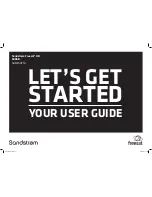
Spectrum Measurements
R&S
®
ESR
276
User Manual 1175.7068.02 ─ 12
●
The "Range" element
The "BaseFormat" element
It carries information about basic settings. In this element only the "ReferencePower"
child node has any effects on the measurement itself. The other attributes and child
nodes are used to display information about the Spectrum Emission Mask Standard on
the measurement screen. The child nodes and attributes of this element are shown in
In the example above (
PowerClass_39_43.xml
under
C:\r_s\instr\sem_std\WCDMA\3GPP
, see
), these attributes are
defined as follows:
●
Standard="W-CDMA 3GPP"
●
LinkDirection="DL"
●
PowerClass="(39,43)dBm"
The "PowerClass" element
It is embedded in the "BaseFormat" element and contains settings information about
the power classes. Up to four different power classes can be defined. For details refer
to the "Sweep List" softkey (
on page 258) and the corresponding parame-
ter description. The child nodes and attributes of this element are shown in
.
The "Range" element
This element is embedded in the "PowerClass" element. It contains the settings infor-
mation of the range. There have to be at least three defined ranges: one reference
range and at least one range to either side of the reference range. The maximum num-
ber of ranges is 20. Note that the R&S
ESR uses the same ranges in each power
class. Therefore, the contents of the ranges of each defined power class have to be
identical to the first power class. An exception are the Start and Stop values of the two
Limit nodes that are used to determine the power class. Note also, that there are two
Limit nodes to be defined: one that gives the limit in absolute values and one in relative
values. Make sure units for the Start and Stop nodes are identical for each Limit node.
For details refer to the "Sweep List" softkey (
on page 258) and the corre-
sponding parameter description. The child nodes and attributes of this element are
shown in
.
The following tables show the child nodes and attributes of each element and show if a
child node or attribute is mandatory for the R&S
ESR to interpret the file or not. Since
the hierarchy of the XML can not be seen in the tables, either view one of the default
files already stored on the R&S
ESR in the "
C:\r_s\instr\sem_std
" directory or
check the structure as shown below.
Below, a basic example of the structure of the file is shown, containing all mandatory
attributes and child nodes. Note that the "PowerClass" element and the range element
are themselves elements of the "BaseFormat" element and are to be inserted where
noted. The separation is done here simply for reasons of a better overview. Also, no
example values are given here to allow a quick reference to the tables above. Italic font
shows the placeholders for the values.
Measurements
















































